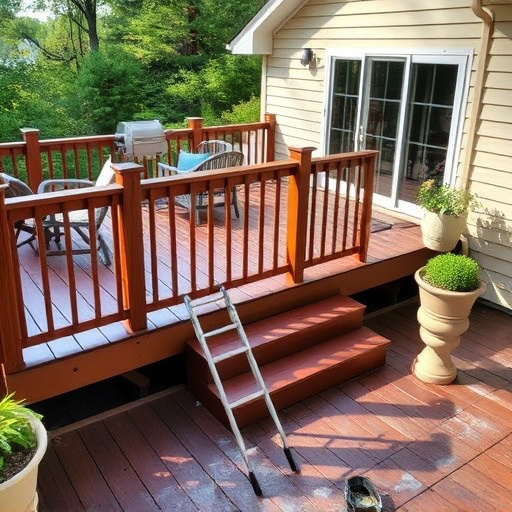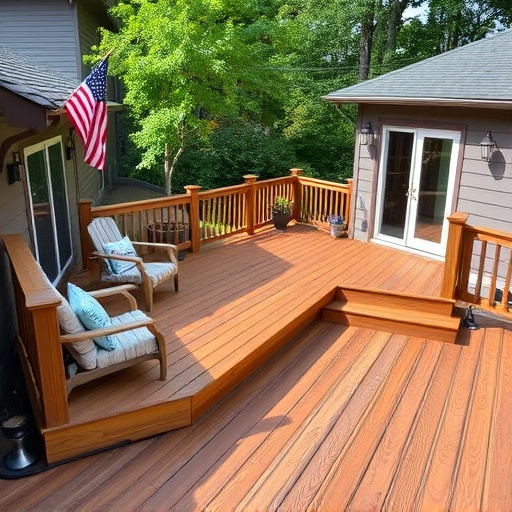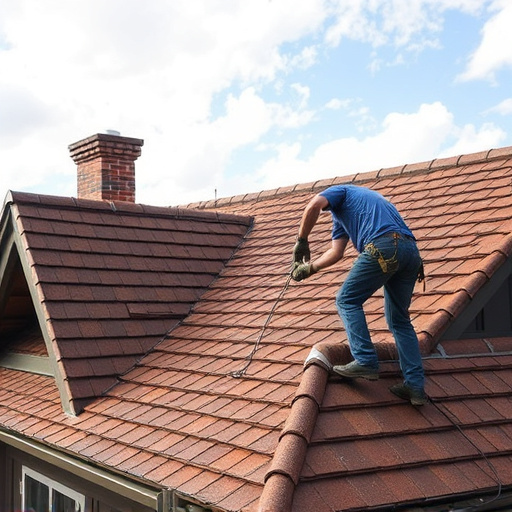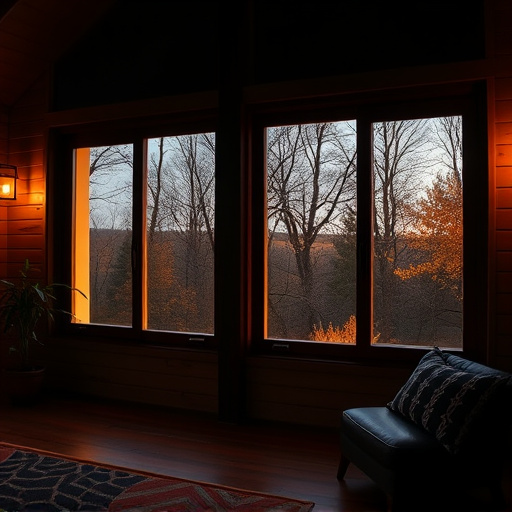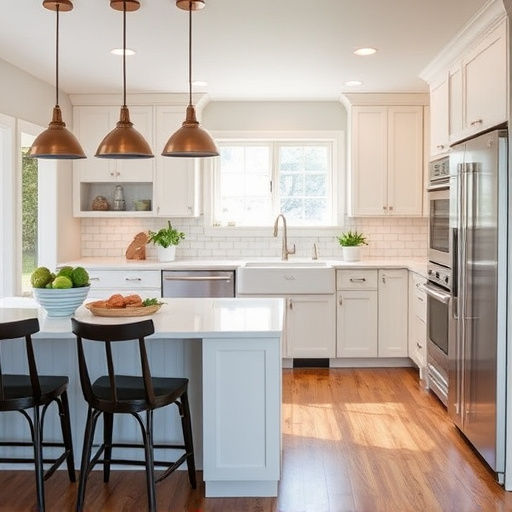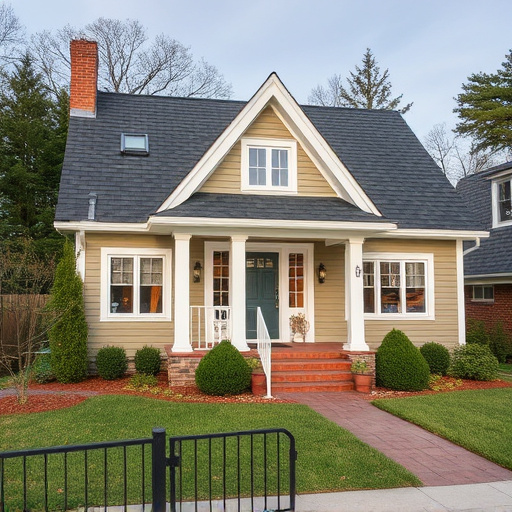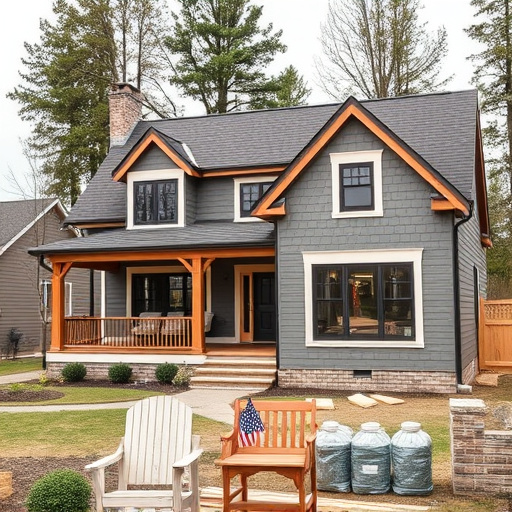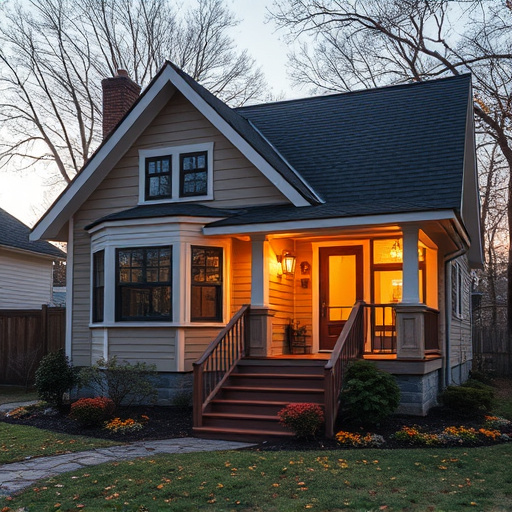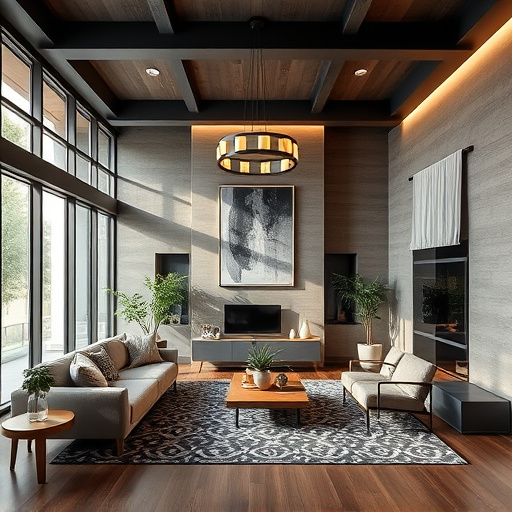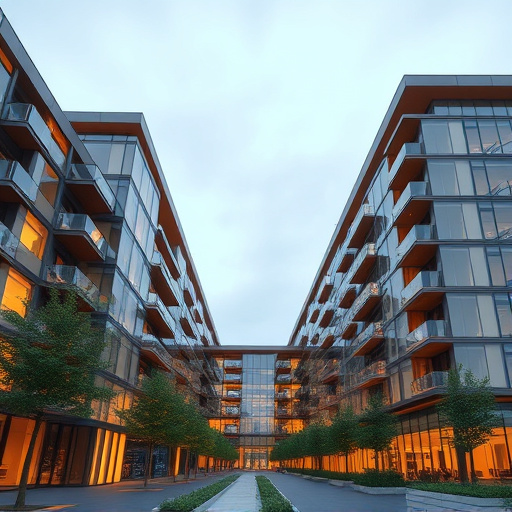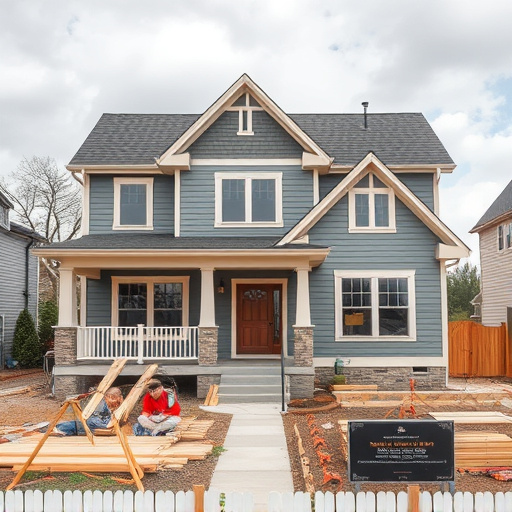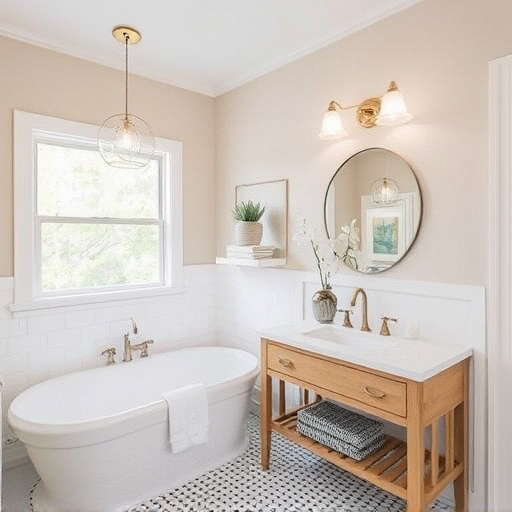Cabinet refacing goes beyond aesthetics, leveraging color psychology to create emotionally comforting spaces. Warm hues energize while cool tones calm. Personalized renovations balance color and functionality, reflecting unique personalities. Lighting conditions guide design choices. Neutral combinations like white, grey, and beige are trendy for timeless elegance. Complementary colors add depth, visual interest, and functional zones, enhancing overall kitchen or bathroom aesthetics.
Transform your kitchen or bathroom with modern cabinet refacing using strategic color combinations. This article explores how to choose the perfect palette to enhance your space, focusing on understanding color psychology and its impact. Discover popular neutral tones for a sleek, contemporary aesthetic, or learn how to highlight specific features with complementary colors. Elevate your cabinet refacing project by tapping into the power of hues and creating a harmonious, inviting environment.
- Understanding Color Psychology for Cabinet Refacing
- Popular Neutral Color Combinations for a Modern Look
- Accentuating Features with Complementary Colors
Understanding Color Psychology for Cabinet Refacing
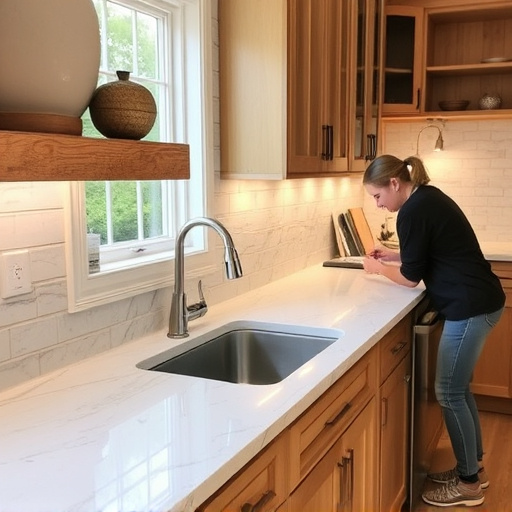
When considering cabinet refacing, understanding color psychology is key to creating a space that’s both aesthetically pleasing and emotionally comforting. Colors have a profound impact on our moods and perceptions, so choosing the right palette can transform your kitchen from ordinary to extraordinary. For instance, warm hues like yellow and orange evoke feelings of energy and happiness, making them ideal for spaces where you want to encourage interaction and positivity. On the other hand, cooler tones such as blue and green are known to promote calmness and relaxation, perfect for creating a peaceful retreat in your home.
In the realm of modern cabinet refacing, a harmonious balance between color and functionality is achieved through customized home renovations. By selecting colors that resonate with personal preferences and cultural backgrounds, you can embark on home transformations that go beyond mere aesthetics. Moreover, considering the lighting conditions within a space—whether natural or artificial—is crucial in determining how colors will appear over time. This knowledge allows for informed decisions regarding floor replacements or other design elements, ensuring that your kitchen not only looks stunning but also feels inviting and reflective of your unique personality.
Popular Neutral Color Combinations for a Modern Look
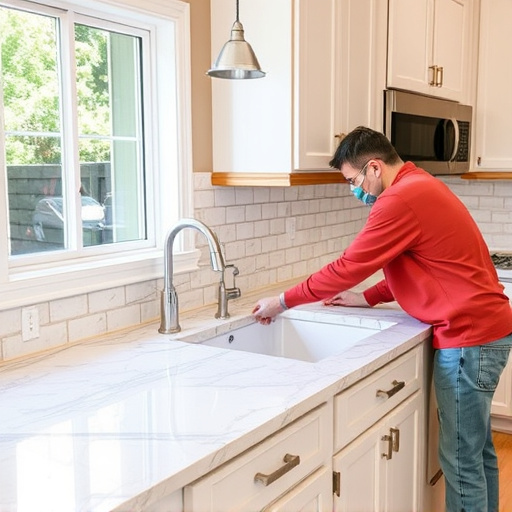
When it comes to modern cabinet refacing, neutral color combinations top the list for their timeless elegance and versatility. Palettes like white, grey, and beige offer a clean canvas that never goes out of style. These neutrals can be paired with accent colors such as deep blues or earthy tones to add depth and character, creating a sophisticated aesthetic suitable for any home renovation.
For those looking to embark on a multiple room remodel, consistent neutral color schemes provide a cohesive look throughout the space. In kitchens, for instance, white cabinets with grey countertops or a calming beige hue paired with brass hardware can create an inviting, modern ambiance—a trend seen across many recent kitchen renovations. These combinations are highly sought after due to their ability to enhance natural light and make smaller spaces appear larger, making them ideal choices for contemporary interior design.
Accentuating Features with Complementary Colors
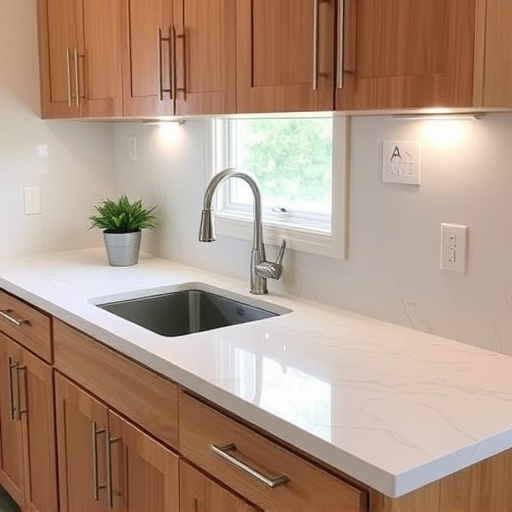
When enhancing features with complementary colors for cabinet refacing, homeowners can create a striking visual impact. By understanding color theory and choosing colors that harmonize or contrast effectively, you can transform your cabinets from ordinary to extraordinary. For instance, pairing earthy tones like deep browns and warm greens with pops of vibrant blues or bold reds adds depth and visual interest to your kitchen or bathroom. This technique not only accentuates specific cabinet details but also guides the eye across the space, making it more engaging.
Complementary colors can also be used to define different zones within a room. For example, in a residential renovation project focusing on functional spaces, you might use lighter shades of blue-green on walls to create a calming environment around a kitchen island, while contrasting darker hues adorn upper cabinets and backsplash, establishing a clear separation between cooking areas and adjacent spaces. This strategic use of color enhances the overall aesthetic appeal and functionality of the renovated cabinet refacing project.
Modern cabinet refacing isn’t just about aesthetics; it’s an art that leverages color psychology to create harmonious spaces. By understanding how colors influence our moods and perceptions, you can transform your cabinets into a symphony of neutral tones for a serene, timeless look or use complementary hues to highlight specific features, adding depth and character to your kitchen or bathroom. Whether you opt for subtle elegance or bold contrast, the right color combination can breathe new life into your spaces, making cabinet refacing a truly game-changing upgrade.
